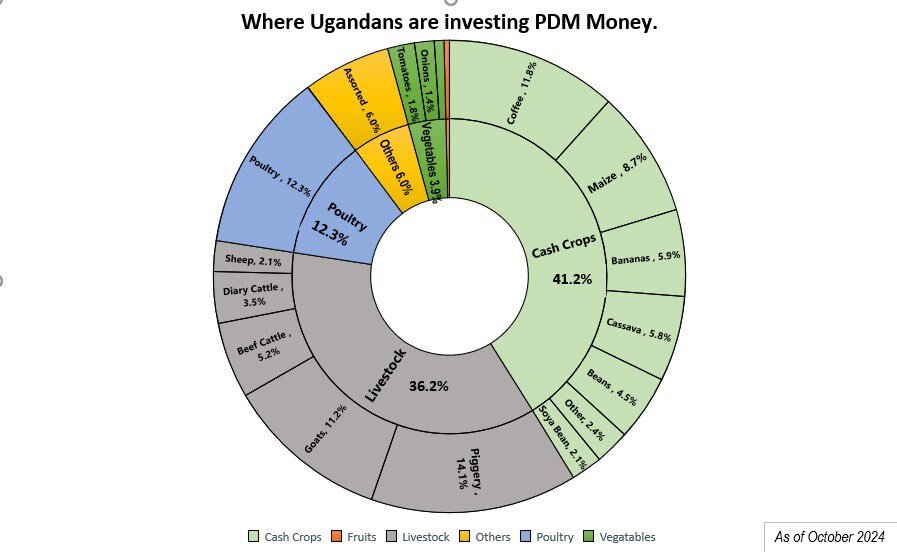
President Yoweri Museveni is slated to resume his nationwide tour assessing the implementation of the Parish Development Model (PDM) with a focus on Eastern Uganda, beginning with the Bukedi Sub-Region on November 6, 2024.
This tour will see the President meet with local leaders, technical staff, and various stakeholders to evaluate the progress of PDM’s roll-out and its impact on poverty alleviation.
According to a statement issued by the Presidential Press Unit (PPU), president Museveni is expected to address public rallies in different districts across the Bukedi Sub-Region. These gatherings aim to engage communities directly, reinforcing the government’s commitment to supporting parish-level initiatives designed to lift households from subsistence to sustainable livelihoods.
This assessment tour follows recent reports highlighting successes and challenges within the PDM, including issues of fund mismanagement and administrative hurdles. The President’s engagement with district stakeholders is anticipated to address these concerns, ensuring that the program continues to advance in line with its objectives.
During the tour, Museveni is expected to address public rallies in different districts across the Bukedi Sub-Region. These gatherings aim to engage communities directly, reinforcing the government’s commitment to supporting parish-level initiatives designed to lift households from subsistence to sustainable livelihoods.
The PDM, launched as a cornerstone of Uganda’s poverty reduction strategy, seeks to empower local economies by channeling resources and support to grassroots communities.
This assessment tour follows recent reports highlighting successes and challenges within the PDM, including issues of fund mismanagement and administrative hurdles. The President’s engagement with district stakeholders is anticipated to address these concerns, ensuring that the program continues to advance in line with its objectives.
As of 2024, PDM program, launched to lift millions out of poverty through grassroots economic empowerment, faces several challenges despite ongoing financial disbursements and strong government backing.
The program is disbursing funds to registered beneficiaries across Uganda’s parishes, aiming to support income-generating projects for vulnerable populations. However, issues like misuse of funds, “ghost” beneficiaries, and corruption have hindered its progress. For instance, officials reported cases where funds were given to ineligible individuals, and some recipients misappropriated funds meant for productive ventures.
The Ministry of Finance has also struggled to trace the impact of the funds, with officials noting difficulties in verifying how recipients used the money in certain districts.
This has led to public outcry, particularly as allegations of parish-level extortion and nepotism persist, with some leaders reportedly demanding bribes from beneficiaries to access their funds. Authorities have initiated investigations, and efforts to hold corrupt officials accountable are underway to restore public trust and reinforce accountability in the program’s future phases.
In major urban centers like Kampala, fund distribution continues with parishes receiving direct mobile payments for easier tracking.
However, the success of PDM will depend on stricter oversight, better accountability mechanisms, and the government’s ability to address these recurring issues and ensure the funds serve their intended purpose to transform communities from subsistence to sustainable income
According to a recent report released by the Secretary to the treasury Ramadhan Ggoobi,as of October 2024, Ugandans who have received funding from the Parish Development Model (PDM) program, totaling UGX 2.1 trillion, have primarily invested in cash crops and livestock, according to the latest data from the program.
The report shows that 41.2% of funds were directed towards cash crops, with maize (8.7%), bananas (5.9%), and cassava (5.8%) being the most popular choices. Other notable cash crops include beans and coffee, reflecting Ugandans’ prioritization of staple and exportable crops to boost household incomes.
prioritization of staple and exportable crops to boost household incomes.
Livestock investments accounted for 36.2% of the funds, with piggery (14.1%), goats (11.2%), and beef cattle (5.2%) drawing significant interest. This category highlights a growing trend among beneficiaries towards diversifying income sources through animal husbandry, which promises both subsistence and commercial returns.
Other notable investment areas include poultry (12.3%) and a smaller share going to vegetables (3.9%) and fruits (6%). The funds are largely being used by beneficiaries in rural parishes across Uganda, aligning with the government’s vision to transition households from subsistence to market-oriented production.






